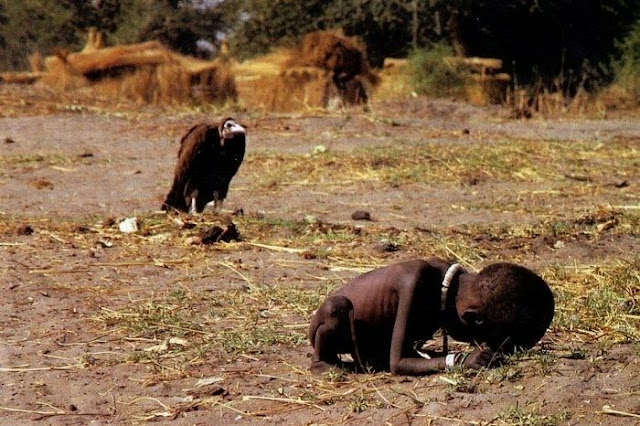“The Struggle for Existence” is derived from ancient times that teaches us to face the harsh reality of life. But behind the reality, there are some hidden bitter-truths that could haunt us forever. For achieving such realizations of humanity, we have to look back to some of the most famous historical images that tell us how much the actual value of a life could be. And here we may find a similar sense from another famous photograph called “The Vulture and the Little Girl”, depicting an utterly pathetic scene of a famine-stricken starving boy – initially believed to be a girl – being preyed upon by a vulture.

Taken by the renowned South African photojournalist Kevin Carter in his trip to South Sudan, this hauntingly iconic photograph has also been known as “Struggling Girl” and was first appeared in The New York Times on March 26th of 1993, which shook the whole world to the core.
Thousands of questions were raised to know whether the little child had survived and many even contacted the News Paper Authority. But the paper responded through an unpleasant clearance note saying, “the child garnered enough strength to walk away from the vulture but her ultimate fate was not known!”
It was strictly prohibited for journalists in Sudan to touch the victims of famine for avoiding the risk of transmitting diseases. Therefore, Carter could not do anything for the poor child who was left by his parents to pick food from a United Nations’ plane nearby.
Carter confessed that he waited 20 minutes for the vulture to fly away and when it didn’t, he took the memorable photograph and chased away the vulture.
However, Carter came under a lot of criticism for not assisting the forlorn child. The St. Petersburg Times wrote this about him: “The man adjusting his lens to take just the right frame of her suffering might just as well be a predator, another vulture on the scene.”

Carter won the Pulitzer Prize in 1994 for this imperishable iconic photograph but couldn’t enjoy it because he regretted not helping the miserable child. This particular photo was haunting him and he was so emotionally distraught inside that three months later on July 27th of 1994, he committed suicide by carbon monoxide poisoning at the age of 33, leaving behind a crucial suicide note and portions of the note read:
“I’m really, really sorry. The pain of life overrides the joy to the point that joy does not exist. …depressed … without phone … money for rent … money for child support … money for debts … money!!! … I am haunted by the vivid memories of killings & corpses & anger & pain … of starving or wounded children, of trigger-happy madmen, often police, of killer executioners … I have gone to join Ken if I am that lucky.”
The final line was a reference to his recently deceased colleague Ken Oosterbroek.



